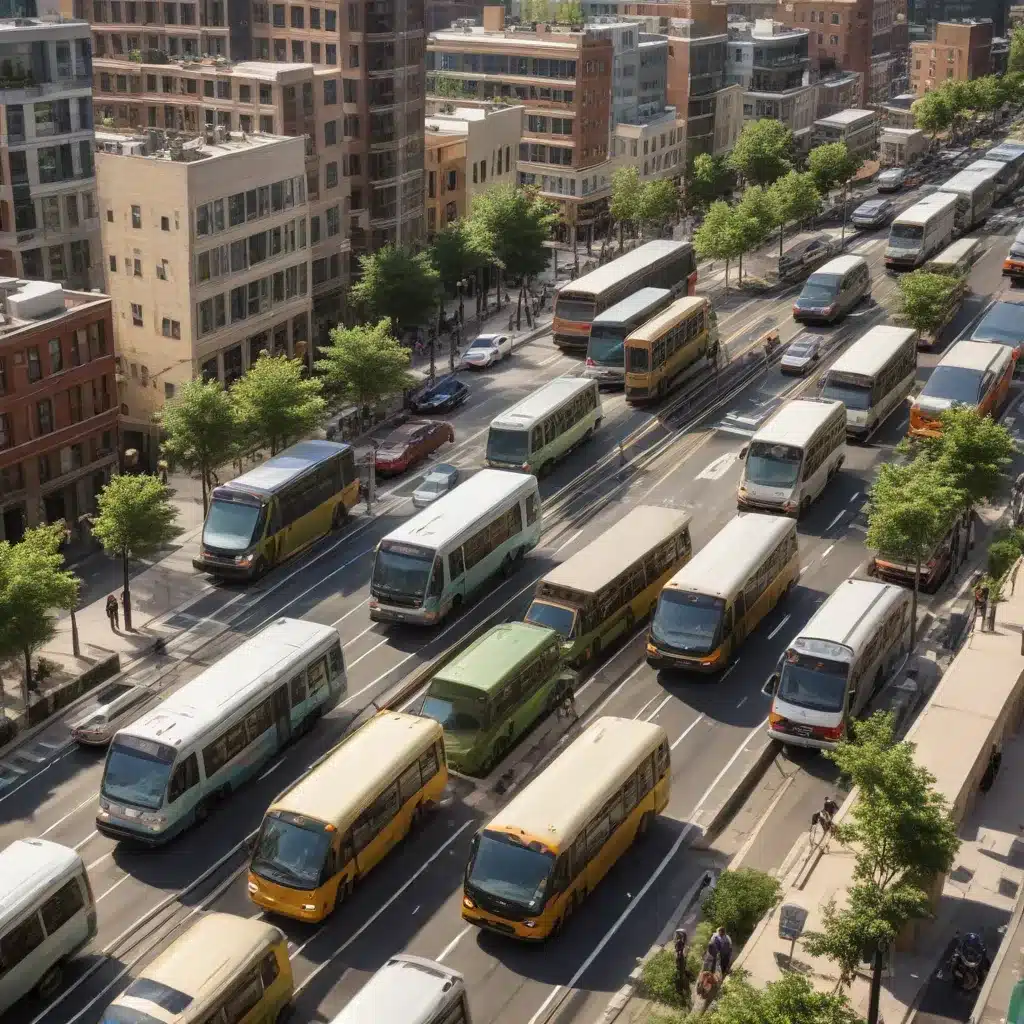
The European Union’s (EU) ambitious climate and energy goals are driving a rapid transition to sustainable mobility across the continent. Policymakers, industry leaders, and communities are aligning transportation and land use planning to create more equitable, resilient, and climate-friendly urban environments. This integrated approach is essential for Europe to achieve its targets of reducing greenhouse gas (GHG) emissions by at least 55% by 2030 and becoming climate-neutral by 2050.
Multimodal Transportation Systems
A critical component of Europe’s sustainable mobility push is the expansion of multimodal transportation networks. Cities are investing heavily in expanding zero-emission public transit, building out robust bicycle and pedestrian infrastructure, and deploying innovative micromobility solutions. For example, the city of Gothenburg, Sweden has seen a 40% increase in public transit ridership since integrating its bus, tram, and bike-sharing systems. Similarly, Amsterdam, the Netherlands has become a global model for active mobility, with over 60% of all trips taken by bicycle or on foot.
Complementing these modal shifts, European nations are rapidly scaling up renewable energy sources to power their transportation sectors. Countries like Denmark and Germany are leading the way in wind power deployment, while nations across Southern Europe are harnessing their abundant solar resources to charge electric vehicles (EVs) and fuel hydrogen-powered cars and buses. These decarbonization efforts are supported by comprehensive policy frameworks, from carbon pricing mechanisms to vehicle electrification mandates.
Emerging Sustainable Technologies
Cutting-edge sustainable technologies are also transforming mobility in Europe. Hydrogen fuel cell vehicles, for instance, are gaining traction, with major automakers like Hyundai and Toyota rolling out new models. Countries are investing in hydrogen refueling station networks to support this shift. Additionally, European cities are piloting autonomous shuttles and cargo bikes for urban freight delivery, reducing emissions and congestion.
Transit-Oriented Development
On the land use planning side, the concept of transit-oriented development (TOD) is gaining widespread adoption across Europe. Cities are strategically locating higher-density, mixed-use developments around public transportation hubs, enabling residents to live, work, and access amenities without relying on private vehicles. For example, Stockholm’s Hagastaden district seamlessly integrates housing, offices, and retail with an extensive metro, commuter rail, and bus rapid transit network.
Green Infrastructure Integration
Alongside TOD, European cities are also incorporating green infrastructure into their urban planning to enhance sustainability. This includes expanding urban tree canopies, integrating renewable energy generation into buildings, and deploying nature-based stormwater management solutions. The Dutch city of Rotterdam, for instance, has transformed its waterfront with a system of parks, green roofs, and permeable surfaces to mitigate flood risks and urban heat island effects.
Mixed-Use Zoning Approaches
Another key strategy is the adoption of mixed-use zoning policies that allow for the integration of residential, commercial, and industrial land uses. This helps reduce sprawl, shorten commute distances, and encourage walking, cycling, and transit use. The city of Paris, France has been a leader in this regard, relaxing zoning restrictions to enable the development of vibrant, mixed-use neighborhoods.
Coordinated Policy Frameworks
Underlying these trends is a growing recognition that transportation and land use planning must be closely aligned. Across Europe, policymakers are developing integrated policy frameworks that coordinate investments, regulations, and incentives across these domains. For instance, the EU’s Sustainable and Smart Mobility Strategy outlines a comprehensive approach to decarbonizing transportation, promoting multimodality, and aligning mobility with sustainable urban development.
Integrated Infrastructure Design
At the local level, cities are also integrating the design of transportation and land use infrastructure. Urban planners are working closely with mobility experts to ensure that new developments, from transit stations to housing complexes, are positioned and configured to optimize accessibility, connectivity, and environmental performance.
Participatory Planning Processes
Critically, this transition is being driven by inclusive, community-based planning processes. European cities are engaging residents, particularly from underserved communities, to ensure that sustainable mobility and land use solutions address their unique needs and priorities. For example, the city of Barcelona, Spain has pioneered a “superblock” model that reclaims urban space for pedestrians and cyclists, shaped by extensive public consultation.
Environmental Sustainability
The alignment of mobility and land use planning is yielding significant environmental benefits across Europe. By reducing reliance on private vehicles, cities are cutting GHG emissions, improving air quality, and mitigating noise pollution. Furthermore, the integration of green infrastructure is enhancing urban resilience to the impacts of climate change, such as heatwaves and flooding.
Social Equity Considerations
Crucially, this transition is also addressing longstanding issues of social equity. By improving access to affordable, reliable, and sustainable transportation options, cities are expanding economic opportunities and enhancing overall quality of life, especially for marginalized populations. Moreover, the participatory planning approach ensures that the needs of diverse communities are centered in the design of these systems.
Economic Viability Assessments
While the environmental and social benefits are clear, European cities are also carefully evaluating the economic viability of their sustainable mobility and land use strategies. Rigorous cost-benefit analyses, as well as innovative financing mechanisms like value capture and public-private partnerships, are ensuring that these investments generate long-term, sustainable returns.
As Europe forges ahead with its ambitious climate and energy agenda, the integration of transportation and land use planning has emerged as a pivotal strategy. By aligning mobility and urban development, European cities are creating more equitable, resilient, and sustainable communities that can serve as models for the rest of the world. To learn more, visit the European Future Energy Forum.







